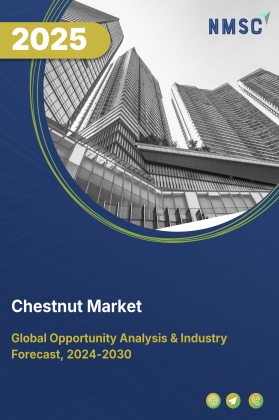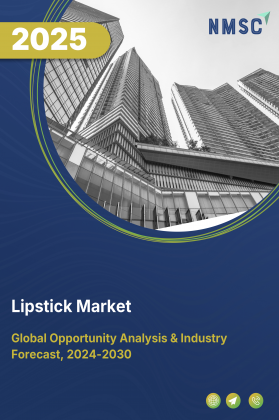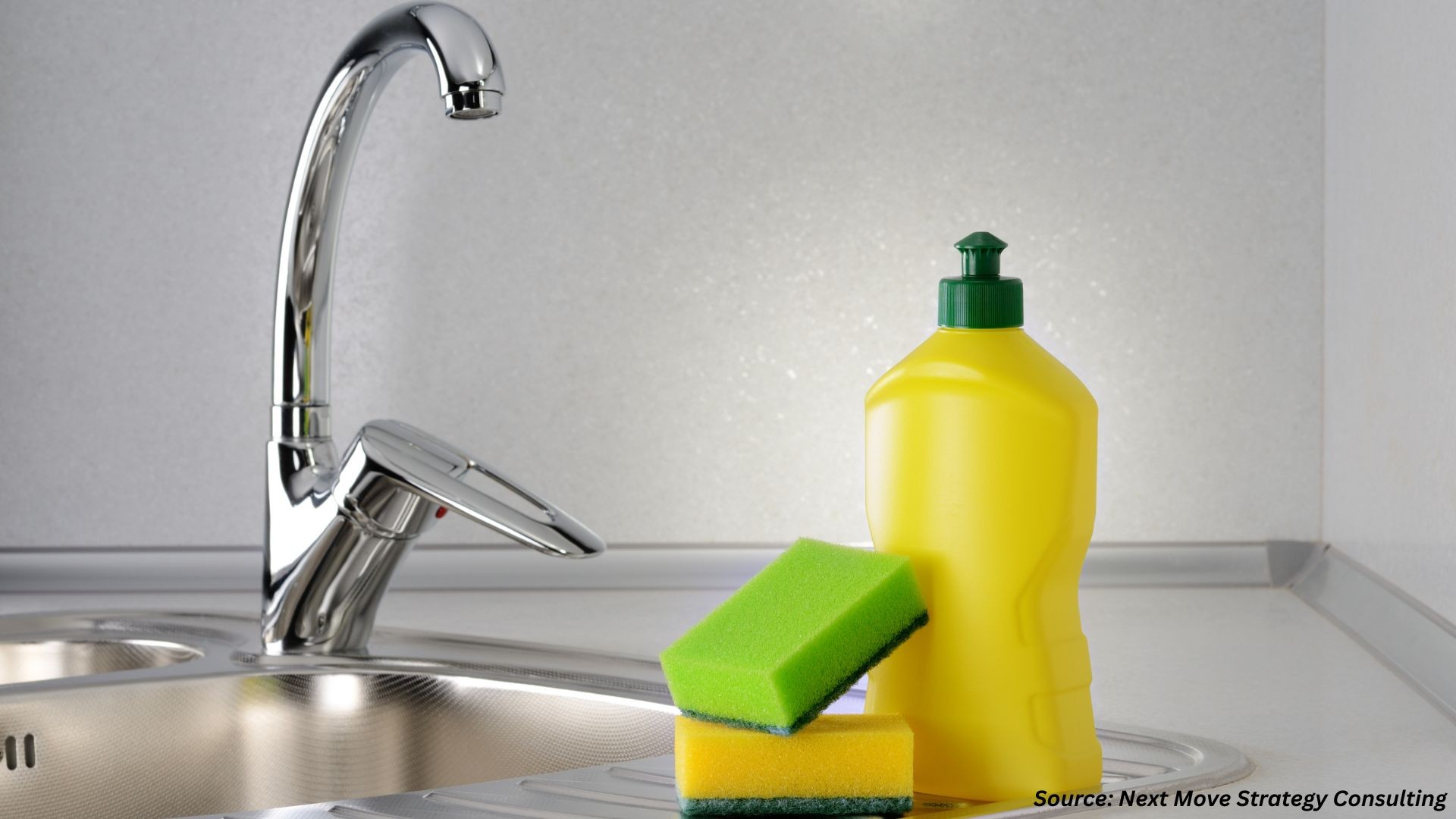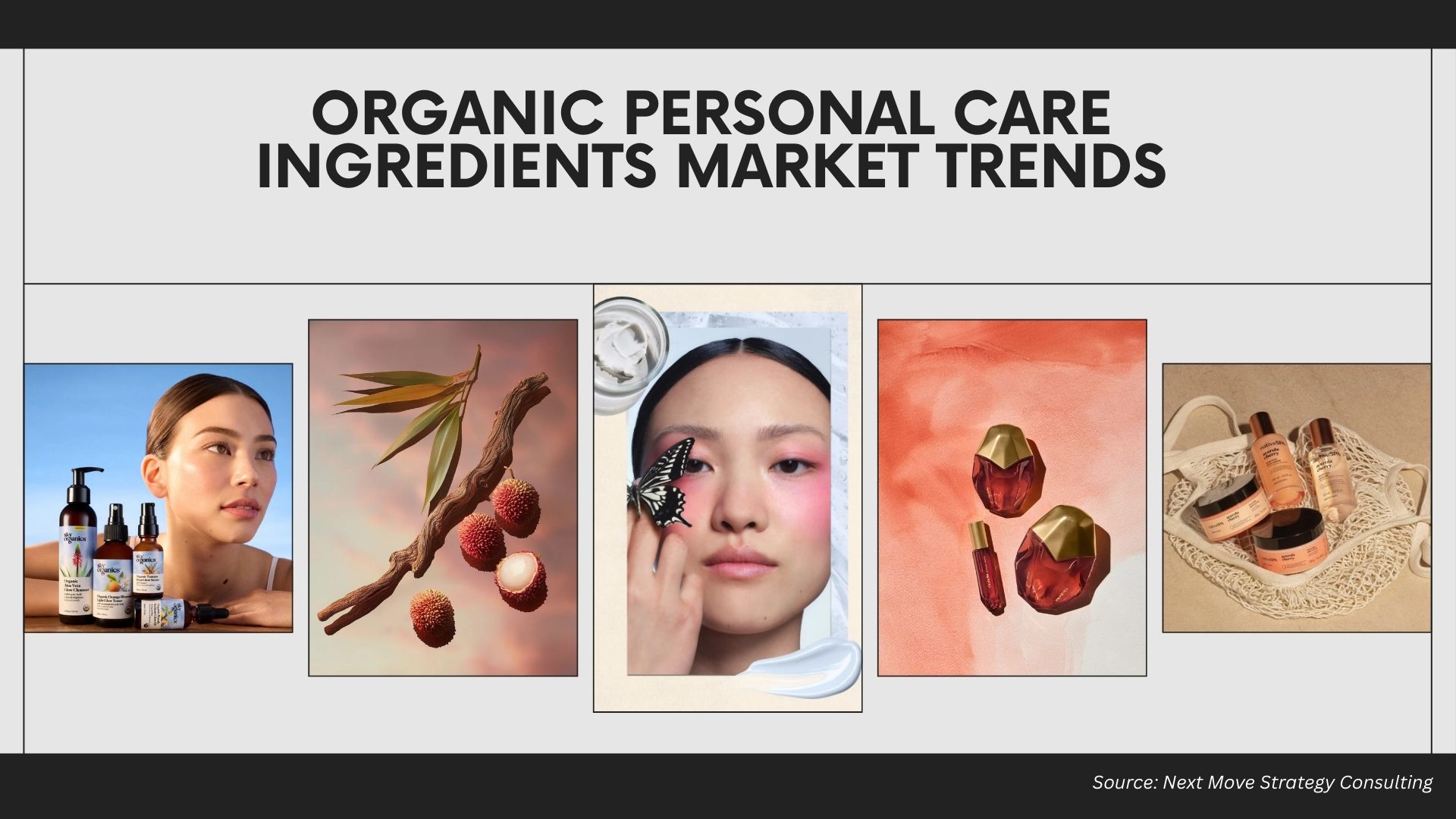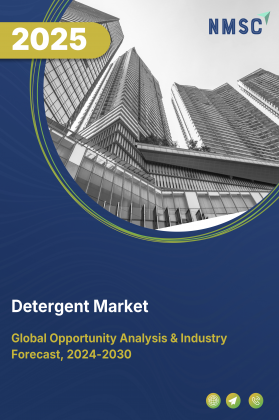
Detergent Market by Product Type (Powder Detergents, Liquid Detergents, Tablet Detergents, Bar Detergents, Specialty Detergents), by Formulation (Synthetic Detergents, Herbal Detergents, Organic Detergents), by Price (Mass-Market Detergents, Premium Detergents, Luxury Detergents), by Application (Household including Laundry, Dishwashing), by Distribution Channel (Offline Retail, Online Retail– Global Analysis & Forecast, 2025–2030.
Industry Outlook
The global Detergent Market size was valued at USD 151.90 billion in 2024, and is expected to be valued at USD 159.49 billion by the end of 2025. The industry is projected to grow, hitting USD 203.56 billion by 2030, with a CAGR of 5.0% between 2025 and 2030.
The detergent market is experiencing rapid transformation, driven by accelerating urbanization, rising disposable incomes, shifting lifestyles, and growing consumer awareness of hygiene and cleanliness. Globally, demand for high-performance, skin-friendly, and eco-conscious detergents is rising sharply, fuelled by the expansion of retail networks, e-commerce platforms, hospitality sectors, and health-conscious households. The growth of online retail, subscription-based models, and smart retail solutions further intensifies the need for innovative detergent formulations, sustainable packaging, and differentiated marketing strategies. Advancements in biodegradable and plant-based ingredients, concentrated and multifunctional formulations, fragrance innovations, and eco-friendly packaging are reshaping product portfolios, improving consumer convenience, and fostering brand loyalty in an increasingly competitive landscape.
What are the Key Detergent Market Trends?
What are the Major Technological Trends Shaping the Detergent Market Demand?
Technological advancements are significantly shaping the detergent industry. Innovations in enzyme technology, plant-based surfactants, and biodegradable formulations are improving cleaning efficiency while reducing environmental impact. Automated and smart manufacturing systems enhance production scalability and consistency, while AI-driven consumer insights enable the development of customized products, such as stain-specific, fabric-sensitive, or fragrance-enhanced detergents. Sustainable technologies, including concentrated liquid formats, recyclable packaging, water-efficient processes, and zero-waste initiatives, are gaining traction as brands respond to growing environmental and regulatory pressures.
How is Demographic Change Influencing the Detergent Market?
Demographic and societal shifts are driving detergent market. Rising urbanization, increasing disposable incomes, and larger middle-class populations are boosting detergent consumption, especially in emerging economies. Younger, eco-conscious, and digitally connected consumers prefer multifunctional, eco-friendly, and premium detergents that align with their lifestyles, while aging populations in developed regions are demanding dermatologically tested, hypoallergenic, and fabric-care focused products. These demographic dynamics are fueling innovation in diverse and targeted detergent offerings.
What Role does Government Support Play in Driving the Detergent Industry Growth?
Government support plays a crucial role in the detergent industry’s growth. Policies encouraging hygiene and cleanliness, wastewater management, and eco-friendly chemical standards strengthen consumer trust and industry adoption. Incentives for domestic manufacturing and MSME participation enhance competitiveness, while environmental compliance regulations push brands toward sustainable product development. Large-scale awareness campaigns on sanitation and hygiene, particularly in rural and semi-urban regions, further accelerate detergent consumption.
How is Consumer Preference Changing in the Detergent Market?
Consumer preferences in the market are rapidly evolving. Modern buyers are moving toward premium, eco-friendly, and multifunctional detergents that deliver superior stain removal, fabric protection, and freshness. Growing awareness of sustainability is driving demand for biodegradable ingredients, refill packs, and recyclable packaging. Consumers are increasingly shifting from conventional powder detergents to liquid, pods, and capsule formats for convenience, while loyalty is being built around ethical sourcing, transparency, and environmental responsibility. Overall, the detergent market is transitioning toward innovative, sustainable, and consumer-centric solutions that match modern household needs.
What are the Key Market Drivers, Breakthroughs, and Investment Opportunities that will Shape the Detergent Industry in Next Decade?
The detergent market is witnessing robust growth, fuelled by rapid urbanization, rising disposable incomes, and growing consumer focus on hygiene, cleanliness, and fabric care. Demand for premium, eco-friendly, and multifunctional detergents is increasing as households and institutions seek products that deliver strong cleaning power while being gentle on fabrics and safe for the environment. The expansion of e-commerce platforms and modern retail networks is improving accessibility and visibility, allowing brands to connect with wider audiences and introduce innovative, customized solutions. However, market growth faces restraints from fluctuations in raw material prices, which directly impact production costs and profit margins. At the same time, opportunities are emerging in the rising demand for biodegradable, plant-based, and sustainable detergents, driving innovation in formulations, packaging, and delivery formats to differentiate brands in an increasingly competitive landscape.
The household disposable income of a country significantly influences consumer spending on personal care and household products, including detergents. In 2024–2025, Japan has the highest per capita disposable income at USD 67,468, followed by Germany at USD 52,296, the United Kingdom at USD 47,670, Canada at USD 47,260, and South Korea at USD 39,965. Higher disposable income in these countries enables consumers to spend more on premium, organic, and multifunctional detergent products, driving demand for advanced formulations, eco-friendly solutions, and luxury offerings. Markets with higher household income levels tend to favor premium and specialty detergents, whereas countries with relatively lower disposable incomes have stronger demand for mass-market and cost-effective detergent products. Overall, rising household incomes in developed regions support growth in the premium and specialty segments of the detergent market, while also encouraging innovation and brand differentiation.
Growth Drivers:
How is Urbanization Driving the Market Demand?
Rising urbanization is a key driver of the detergent market, as more people migrate to cities and embrace modern lifestyles. According to the World Bank, the urban population accounts for 66% of China’s total population and 84% of the U.S. population, reflecting the scale of urban concentration in both developed and emerging economies. Urban households typically have higher disposable incomes, greater access to modern retail, and stronger awareness of hygiene standards, all of which fuel detergent consumption. Busy city lifestyles are also driving demand for convenient and time-saving formats such as liquid detergents, pods, and concentrated products. Moreover, urban consumers are more inclined toward premium, eco-friendly, and specialized detergents, creating significant opportunities for product innovation and diversification.
The level of urbanization in a country strongly influences demand for detergents, as urban populations tend to have higher exposure to modern retail, e-commerce platforms, and lifestyle-driven consumption patterns. In 2024, Germany has the largest urban population at 65.05 million, followed by the United Kingdom at 58.76 million, France at 56.21 million, South Korea at 42.17 million, Canada at 33.84 million, and Australia at 23.60 million.
Higher urban populations drive increased detergent consumption due to greater access to supermarkets, hypermarkets, specialty stores, and online retail channels, as well as a stronger preference for premium, multifunctional, and eco-friendly products. Countries with moderately urbanized populations, such as South Korea and Canada, show growing demand for mass-market and mid-premium detergents. Meanwhile, nations with smaller urban populations, like Australia, represent emerging opportunities where detergent companies expand reach through modern retail expansion and digital channels. Overall, urbanization levels are closely linked to market growth, product accessibility, and consumer preference trends in the detergent market.
Is Expansion of E-Commerce and Modern Retail Channels Accelerating the Market Growth?
The rapid growth of e-commerce platforms, supermarkets, hypermarkets, and convenience stores is accelerating the detergent market. Online retail enables consumers to easily access a wide range of detergent formats, such as powders, liquids, pods, and eco-friendly variants, from the comfort of their homes, boosting overall demand. Modern retail outlets enhance product visibility, support promotional campaigns, and showcase innovative launches, allowing brands to differentiate themselves and reach a wider consumer base. In addition, digital platforms empower companies to leverage subscription models, targeted advertising, and personalized recommendations, which strengthen brand engagement and encourage repeat purchases. As consumers increasingly favor the convenience, variety, and accessibility of organized retail and online shopping, these channels are emerging as critical growth drivers for the detergent industry.
The global e-commerce landscape directly impacts the distribution and sales of detergents, as online retail platforms provide consumers with convenient access to a wide variety of products, including premium, multifunctional, and eco-friendly detergents. In 2025, China dominates global e-commerce with a 52.1% market share, followed by the USA at 20.1%, while the UK and Japan contribute 3.4% and 3.3%, respectively. South Korea, Germany, and France account for smaller shares of 2.5%, 1.7%, and 1.4%, with the remaining countries collectively holding 15.5%.
High e-commerce penetration in countries such as China and the USA enables detergent manufacturers to reach a larger and more diverse consumer base, drive adoption of premium and niche products, and implement personalized marketing, subscription models, and direct-to-consumer strategies. In regions with smaller e-commerce shares, such as Germany, France, and South Korea, traditional retail channels continue to dominate, but online platforms still present growing opportunities for expansion of detergent product lines. Overall, the increasing role of e-commerce is a key growth driver for the global detergent market, particularly in urbanized and digitally connected markets.
Growth Inhibitors:
How does Volatility in Raw Material Prices Limit the Detergent Market Expansion?
One of the major restraints in the detergent market is the fluctuation in raw material prices, particularly those of surfactants, petrochemical derivatives, and natural oils used in formulations. Price instability increases production costs and reduces profit margins for manufacturers, especially for small and mid-sized players who have limited capacity to absorb sudden cost hikes. This volatility also creates challenges in pricing strategies, making it difficult for brands to maintain affordability while offering premium or eco-friendly innovations. In highly competitive markets, rising input costs slow down product adoption and limit growth opportunities.
How is Rising Demand for Eco-Friendly and Sustainable Products Creating Opportunity for the Market?
A major opportunity in the detergent market lies in the growing consumer preference for eco-friendly and sustainable solutions. Increasing environmental awareness is driving demand for detergents made with biodegradable ingredients, plant-based surfactants, and recyclable or refillable packaging. Consumers, especially in urban and developed markets, are willing to pay a premium for products that align with their values of sustainability and health safety. This shift is encouraging manufacturers to innovate with concentrated liquid detergents, low-water-use formulations, and plastic-free packaging. Companies that successfully position themselves as environmentally responsible strengthen brand loyalty, capture new customer segments, and differentiate themselves in a highly competitive market.
How Detergent Market is Segmented in this Report, and What are the Key Insights from the Segmentation Analysis?
By Product Type Insights
Which Product Type Is Expected to Drive the Detergent Market in 2025?
On the basis of product type, the market is segmented into Powder Detergents, Liquid Detergents, Tablet Detergents, Bar Detergents, and Specialty Detergents. The detergent market in 2025 is expected to be primarily driven by Powder Detergents. Powder detergents continue to dominate consumer preference due to their affordability, ease of storage, long shelf life, and effective cleaning performance across household and commercial settings. They are widely used for laundry and general cleaning, making them a staple in both urban and rural markets.
While other segments such as Liquid Detergents, Tablet Detergents, Bar Detergents, and Specialty Detergents are gaining traction due to convenience, premium positioning, and niche applications, powder detergents remain the backbone of the market. Additionally, Specialty Detergents are emerging as a high-potential category, driven by rising demand for eco-friendly, multifunctional, and customized formulations that cater to specific cleaning needs, fragrance preferences, and environmentally conscious consumers.
The pie chart illustrates the global detergent market share by product type in 2024. Fabric detergents dominate the market with a 54.9% share, highlighting strong consumer preference for traditional laundry cleaning products. Other products, which include specialty cleaning solutions and multipurpose detergents, account for 29.3% of the market. Fabric softeners and conditioners hold a smaller share of 15.8%, reflecting their supplementary role in laundry routines. Overall, the chart emphasizes that while fabric detergents remain the core segment driving market growth, there is a notable presence of complementary products catering to diverse consumer needs in the detergent market.
By Formulation Insights
Which Formulation Segment Is Likely to Lead the Detergent Market in 2025?
On the basis of formulation, the market is segmented into Synthetic Detergents, Herbal Detergents, Organic Detergents, Multifunctional Detergents, Fragrance-Specific Detergents, and Sensitive Skin Detergents. The detergent market in 2025 is expected to be primarily driven by Synthetic Detergents. Synthetic detergents continue to dominate consumer preference due to their high cleaning efficiency, cost-effectiveness, and widespread availability for both household and commercial applications. They are suitable for a variety of fabrics and surfaces, making them a versatile choice for consumers globally.
While other formulations such as Herbal Detergents, Organic Detergents, Multifunctional Detergents, Fragrance-Specific Detergents, and Sensitive Skin Detergents are gaining traction due to health-conscious, eco-friendly, and premium consumer trends, synthetic detergents remain the backbone of the market. Additionally, Multifunctional and Organic Detergents are emerging as high-potential categories, driven by increasing consumer demand for natural ingredients, multifunctional cleaning benefits, and skin-friendly or environmentally responsible products.
By Price Insights
Which Price Segment Is Expected to Drive the Detergent Market in 2025?
On the basis of price, the market is segmented into Mass-Market Detergents, Premium Detergents, and Luxury Detergents. The detergent market in 2025 is expected to be primarily driven by Mass-Market Detergents. Mass-market detergents continue to dominate consumer preference due to their affordability, widespread availability, and suitability for everyday household and commercial use. They appeal to a broad range of consumers across urban and rural areas, making them the largest contributor to overall market demand.
While Premium and Luxury Detergents are gaining traction due to health-conscious, eco-friendly, and lifestyle-focused consumer trends, mass-market detergents remain the backbone of the market. Additionally, premium and luxury segments are emerging as high-potential categories, driven by increasing demand for natural ingredients, specialized formulations, multifunctional benefits, and eco-friendly or luxury packaging.
By Application Insights
Which Application Segment Is Poised to Lead Growth in the Detergent Market in 2025?
On the basis of application, the market is segmented into Household and Commercial / Institutional users. The detergent market in 2025 is expected to be primarily driven by the Household segment. Household users continue to dominate demand due to regular consumption for laundry, dishwashing, and general cleaning, as well as the growing preference for premium, herbal, and multifunctional detergent products among individual consumers.
While the Commercial / Institutional segment, including hotels and hospitality, healthcare and hospitals, industrial laundries, and textile and dry-cleaning services, is gaining traction due to large-volume usage and specialized cleaning requirements, household consumption remains the backbone of the market. Additionally, the commercial segment is emerging as a high-potential category, driven by increasing demand for eco-friendly, high-efficiency, and sensitive-skin detergents in professional settings.
By Distribution Channel Insights
Which Distribution Channel Is Expected to Dominate the Detergent Market in 2025?
On the basis of distribution channel, the market is segmented into Offline Retail, Online Retail, and Direct Sales and Subscription Models. The detergent market in 2025 is expected to be primarily driven by Offline Retail. Offline retail continues to dominate due to the widespread presence of supermarkets, hypermarkets, grocery stores, and specialty stores, providing consumers with easy access, product variety, and the ability to make immediate purchase decisions.
While Online Retail and Direct Sales / Subscription Models are gaining popularity due to convenience, home delivery, personalized offerings, and subscription-based access, offline channels remain the backbone of market growth. Additionally, online and subscription channels are emerging as high-potential segments, driven by e-commerce expansion, digital marketing, and increasing consumer preference for home shopping and recurring deliveries.
Regional Outlook
The market is geographically studied across North America, Europe, Asia Pacific, and the Middle East & Africa, and each region is further studied across countries.
Detergent Market in North America
The North American detergent market is being driven by increasing consumer awareness of hygiene and cleanliness, rising disposable incomes, and a growing preference for premium and eco-friendly products. Expanding retail networks, including supermarkets, hypermarkets, and e-commerce platforms, are enhancing accessibility and product visibility. Urban households are demanding multifunctional, fabric-safe, and concentrated detergents, while the shift toward sustainable and chemical-free solutions is creating new growth opportunities for manufacturers in the region.
Detergent Market in the United States
In the U.S., market growth is primarily fueled by the rising adoption of natural, biodegradable, and premium detergents. Health-conscious and environmentally aware consumers are seeking products with strong cleaning power, fabric protection, and sustainable packaging. The expansion of organized retail and online platforms allows brands to reach diverse consumer segments, while innovations such as liquid detergents, pods, and refill packs are driving product differentiation and strengthening brand loyalty.
Detergent Market in Canada
In Canada, demand for detergents is being driven by urbanization, higher disposable incomes, and increasing awareness of sustainable and fabric-friendly products. Consumers are showing a preference for detergents with added benefits such as hypoallergenic properties, fragrance variety, and eco-friendly formulations. E-commerce and modern retail are broadening product reach, while growing interest in environmental responsibility is pushing manufacturers to innovate in formulations, concentrates, and recyclable packaging.
Detergent Market in Europe
The European detergent market is supported by strong sustainability trends, eco-conscious lifestyles, and strict environmental regulations. Consumers are increasingly adopting premium, organic, and multifunctional detergents with plant-based ingredients and dermatological safety features. Retail modernization, rising e-commerce penetration, and sustainability-driven innovation are expanding product visibility and accessibility. The market is also witnessing a shift toward concentrated, low-water-use, and plastic-free formulations, creating opportunities for brands to serve diverse consumer preferences across the region.
Detergent Market in the United Kingdom
In the U.K., the detergent market is primarily driven by rising consumer focus on hygiene, convenience, and eco-friendly living. Urban households and higher disposable incomes are fueling demand for concentrated liquids, pods, and sustainable detergents, while growing awareness of biodegradable and chemical-free ingredients is shaping purchasing decisions. The expansion of modern retail chains and e-commerce platforms is improving accessibility, enabling consumers to explore a wider variety of premium and eco-conscious detergent offerings. Additionally, government initiatives promoting hygiene and sustainability further support consistent detergent usage and steady market growth across the country.
Detergent Market in Germany
Germany’s detergent market is primarily driven by consumer preference for premium, eco-friendly, and high-performance detergents, along with strong awareness of hygiene and sustainability. Urban households with higher disposable incomes are increasingly seeking concentrated, multifunctional, and fabric-safe washing powder. The expansion of modern retail outlets and e-commerce platforms enhances product accessibility, while sustainability trends encourage the adoption of biodegradable, chemical-free, and recyclable detergent products, supporting steady market growth.
Detergent Market in France
In France, market growth is fueled by urbanization and rising health and environmental consciousness. Consumers are increasingly adopting natural, organic, and multifunctional detergents, with a focus on fabric protection and eco-friendly formulations. Modern retail channels, including supermarkets, specialty stores, and online platforms, improve product visibility and accessibility. The demand for premium, sustainable, and wellness-oriented detergents is further supported by public awareness of hygiene and eco-conscious lifestyles.
Detergent Market in Spain
Spain’s detergent market is significantly influenced by urbanization and growing disposable incomes, which expand access to modern retail and e-commerce platforms. Consumers in urban areas show strong preference for premium, eco-friendly, and multifunctional detergents, creating opportunities for brands to innovate in fragrance, formulation, and packaging. Sustainability trends and environmentally responsible purchasing behavior are encouraging the adoption of biodegradable and chemical-free detergents, driving market growth.
Detergent Market in Italy
Italy’s market is being driven by increasing health, wellness, and sustainability awareness, along with strong demand for premium and natural products. Consumers are increasingly seeking multifunctional, fabric-safe, and eco-conscious detergents, supported by urbanization and rising disposable incomes. The expansion of modern retail and e-commerce channels enhances product accessibility, while growing interest in sustainable and chemical-free formulations provides opportunities for product differentiation and brand loyalty.
Detergent Market in the Nordics
In the Nordic countries, the market is primarily driven by high consumer awareness of hygiene, wellness, and eco-friendly living. Urban populations with higher disposable incomes are seeking premium, multifunctional, and sustainable detergents. Strong trends toward biodegradable, chemical-free, and environmentally responsible formulations are influencing purchasing behavior, while modern retail chains and e-commerce platforms improve accessibility and product visibility. Consumers increasingly prefer products that combine effective cleaning, fabric care, and environmental responsibility, supporting steady market growth.
Detergent Market in Asia Pacific
The market in Asia Pacific is being fueled by rapid urbanization, rising disposable incomes, and growing health and wellness awareness. Countries such as India, China, South Korea, Japan, and Australia are witnessing strong demand for premium, eco-friendly, and multifunctional cleaning agents, driven by expanding urban populations and evolving lifestyles. The growth of modern retail outlets and e-commerce platforms is increasing product accessibility, while consumers are increasingly opting for biodegradable, chemical-free, and sustainable formulations. Rising awareness of hygiene, wellness trends, and environmental sustainability is creating significant opportunities for innovation and market expansion across the region.
Detergent Market in China
China’s detergent market growth is primarily driven by urbanization, rising disposable incomes, and increasing demand for premium and herbal products. Consumers are seeking multifunctional, fabric-safe, and eco-friendly detergents, supported by strong awareness of hygiene and wellness. The expansion of e-commerce platforms and modern retail chains enhances product availability, while growing interest in sustainable and chemical-free products fosters brand differentiation and market development.
Detergent Market in Japan
Japan’s market is influenced by aging populations, high health consciousness, and preference for premium personal care products. Consumers increasingly prefer gentle, fabric-safe, multifunctional, and eco-friendly detergents that cater to sensitive needs. Availability through supermarkets, specialty stores, and online platforms ensures accessibility, while trends toward sustainable formulations encourage innovation and product differentiation.
Detergent Market in India
In India, the market is being significantly driven by rapid urbanization, rising disposable incomes, and increasing awareness of hygiene. According to the World Bank, India’s urban population is approximately 534.91 million, highlighting the concentration of consumers in cities. This demographic shift, combined with growing health consciousness, is boosting demand for premium, herbal, and multifunctional detergents. Expansion of modern retail outlets and e-commerce platforms, along with increasing focus on eco-friendly and chemical-free formulations, is creating strong opportunities for product innovation and market growth across urban centers.
Detergent Market in South Korea
In South Korea, the market is primarily driven by urbanization, rising disposable incomes, and increasing consumer awareness of hygiene and wellness. Urban populations are seeking premium, multifunctional, and eco-friendly detergents. Widespread availability through modern retail chains and e-commerce platforms supports consistent market growth and encourages innovation in product formulations and sustainable packaging.
Detergent Market in Taiwan
Taiwan’s market growth is fueled by health-conscious and eco-aware consumers who prefer premium, multifunctional, and biodegradable detergents. Expansion of urban areas, higher disposable incomes, and exposure to global personal care trends are driving adoption of sustainable, chemical-free, and fabric-friendly products. Retail modernization and online shopping platforms improve accessibility, while trends toward eco-friendly and innovative formulations create opportunities for product differentiation and market expansion.
Detergent Market in Indonesia
In Indonesia, the market is being driven by rapid urbanization, a growing middle-class population, and increasing awareness of hygiene and cleanliness. Consumers are demanding multifunctional, fabric-safe, and eco-friendly detergents, while e-commerce and modern retail channels improve accessibility and product variety. Rising interest in biodegradable and chemical-free formulations encourages brands to innovate in ingredients, fragrances, and packaging, creating strong growth prospects across urban and semi-urban markets.
Detergent Market in Australia
Australia’s market is supported by urbanization, rising disposable incomes, and increasing preference for premium and eco-conscious products. Urban consumers are seeking multifunctional, fabric-friendly, and sustainable detergents that deliver superior cleaning while being environmentally responsible. The expansion of modern retail outlets and online platforms enhances product visibility and accessibility, while trends toward chemical-free and biodegradable formulations foster innovation and market growth nationwide.
Detergent Market in Latin America
In Latin America, the market is primarily driven by rapid urbanization, rising disposable incomes, and increasing consumer awareness of hygiene and wellness. Growing urban populations in countries such as Brazil, Mexico, and Argentina are fueling demand for premium, multifunctional, and eco-friendly detergents. Expansion of modern retail outlets and e-commerce platforms improves accessibility and product visibility, while the preference for natural, skin-safe, and sustainable formulations encourages innovation and supports market growth across metropolitan and semi-urban regions.
Detergent Market in the Middle East & Africa
In the Middle East and Africa, market growth is supported by urbanization, rising health consciousness, and increasing adoption of personal care and cleaning products. Consumers are seeking premium, multifunctional, and environmentally responsible detergents, with growing focus on biodegradable and chemical-free formulations. Expansion of retail channels, including supermarkets, specialty stores, and online platforms, enhances product availability, while demand for eco-friendly and sustainable products presents opportunities for differentiation and innovation, driving steady growth across the region.
Competitive Landscape
Which Companies Dominate the Detergent Market and How Do They Compete?
The global detergent market is dominated by major multinational manufacturers and regional players, including Procter & Gamble Co., Henkel AG & Co. KGaA, Reckitt Benckiser Group Plc, Kao Corporation, Church & Dwight Co., Inc., Godrej Consumer Products Ltd., Amway Corporation, S & N Products Pty Ltd (Blue Moon), LG Household & Health Care Ltd., The Clorox Company, Nirma Limited, Colgate-Palmolive Company, Guangzhou Liby Enterprise Group Co., Ltd., and Lion Corporation (Thailand) Limited. These companies compete by offering a broad range of detergent products across mass-market, premium, eco-friendly, herbal, and multifunctional segments, catering to diverse consumer preferences worldwide. Market leaders differentiate themselves through innovative formulations, such as concentrated, multifunctional, and plant-based detergents, along with sustainable and biodegradable ingredients, eco-friendly packaging, and premium branding. Expansion of global and regional distribution networks, strong marketing campaigns, and product diversification further strengthen their competitive position. Regional specialists and niche brands focus on customized, herbal, or eco-conscious detergents, targeting specific consumer demographics and local markets. As demand grows for premium, multifunctional, and environmentally responsible detergents, companies that combine technological innovation, operational efficiency, sustainability, and strong bra
Market dominated by Detergent Market Giants and Specialists
The market is divided between large multinational manufacturers and regional or niche players. Large companies compete on scale, brand recognition, extensive distribution networks, and broad product portfolios, offering a wide range of detergents from mass-market to premium and specialty variants. Smaller or specialist providers focus on organic, eco-friendly, or customized formulations, catering to specific consumer needs, local markets, or premium segments. This creates a dual market structure where consumers either choose well-established brands for reliability and variety or opt for specialized products that meet unique cleaning, fabric-care, or sustainability requirements.
Innovation and Adaptability Drive Market Success
Market leaders are investing in innovative formulations, sustainable ingredients, and advanced production technologies to enhance cleaning efficiency, fabric protection, and consumer appeal. Companies are developing multifunctional, plant-based, biodegradable, and concentrated detergents, alongside eco-friendly packaging to meet evolving consumer preferences. Brands that adapt to trends like personalization, natural and organic ingredients, and sustainability-oriented offerings are securing stronger market presence and loyalty. Continuous innovation in fragrance, formulation, packaging, and performance is key to maintaining competitive advantage.
Market Players to Opt for Merger & Acquisition Strategies to Expand Their Presence
Mergers and acquisitions have become a strategy for detergent companies to expand product portfolios, enter new geographic markets, and acquire specialized formulations or production capabilities. Leading manufacturers are acquiring regional or niche detergent brands to strengthen market share, diversify offerings, and integrate advanced production technologies. These M&A activities enable companies to reach new consumer segments, scale operations, and respond effectively to growing demand for premium, eco-friendly, and multifunctional detergents, while enhancing their competitive positioning in both mass-market and specialty categories.
List of Key Detergent Companies
-
Henkel AG & Co. KGaA
-
Reckitt Benckiser Group Plc
-
Kao corporation
-
Church & Dwight Co., Inc.
-
Godrej
-
Amway Corporation
-
S & N Products Pty Ltd (Blue Moon)
-
LG Household & Health Care Ltd.
-
The Clorox Company
-
Nirma Limited
-
Colgate-Palmolive Company
-
Guangzhou Liby Enterprise Group Co., Ltd.
-
Lion Corporation (Thailand) Limited
-
Guangzhou Liby Enterprise Group Co., Ltd.
What are the Latest Key Industry Developments?
-
September 2025 - Tide introduced its most advanced liquid detergent formula in 20 years, enhancing stain removal, whitening, and scent.
-
September 2025 - Kao, in collaboration with CP, launched its innovative laundry detergent "extra" in Thailand's 21,500-billion-baht market.
-
January 2025 - Church & Dwight's ARM & HAMMER™ POWER SHEETS™ quickly became a top-selling brand in the detergent sheets category on Amazon in 2024 and are expanding nationally in 2025.
-
September 2024 - Henkel's all® free clear and all® sensitive fresh liquid laundry detergents won the 2024 Safer Choice Partner of the Year award for containing safer ingredients for families and the environment.
-
April 2024 - P&G recalled 8.2 million bags of Tide, Gain, Ace, and Ariel laundry detergent pods due to defective child-resistant packaging that could pose serious risks.
What are the Key Factors Influencing Investment Analysis & Opportunities in the Detergent Market?
The market is attracting increasing investor interest as global demand rises for premium, eco-friendly, multifunctional, and high-performance cleaning products. Companies offering innovative formulations, sustainable and biodegradable ingredients, and differentiated packaging are particularly appealing, with investments focused on scalable production, technological advancements, and product innovation. Market activity is especially strong in North America, Europe, and Asia-Pacific, where urbanization, rising disposable incomes, health consciousness, and environmental awareness are driving rapid adoption of premium and specialized detergents. Strategic mergers, acquisitions, and partnerships by leading manufacturers emphasize consolidation as a key growth strategy. For investors, the most promising opportunities lie in companies that combine diverse product portfolios, innovation in formulations and production technologies, operational efficiency, and the ability to respond to evolving consumer preferences ac
Key Benefits for Stakeholders:
Next Move Strategy Consulting (NMSC) presents a comprehensive analysis of the market, covering historical trends from 2020 through 2024 and offering detailed forecasts through 2030. Our study examines the market at global, regional, and country levels, providing quantitative projections and insights into key growth drivers, challenges, and investment opportunities across all major market segments.
Report Scope:
|
Parameters |
Details |
|
Market Size in 2025 |
USD 159.49 Billion |
|
Revenue Forecast in 2030 |
USD 203.56 Billion |
|
Growth Rate |
CAGR of 5.0% from 2025 to 2030 |
|
Analysis Period |
2024–2030 |
|
Base Year Considered |
2024 |
|
Forecast Period |
2025–2030 |
|
Market Size Estimation |
Billion (USD) |
|
Growth Factors |
|
|
Companies Profiled |
15 |
|
Countries Covered |
28 |
|
Market Share |
Available for 10 companies |
|
Customization Scope |
Free customization (equivalent to up to 80 analyst-working hours) after purchase. Addition or alteration to country, regional & segment scope. |
|
Pricing and Purchase Options |
Avail customized purchase options to meet your exact research needs. |
|
Approach |
In-depth primary and secondary research; proprietary databases; rigorous quality control and validation measures. |
|
Analytical Tools |
Porter's Five Forces, SWOT, value chain, and Harvey ball analysis to assess competitive intensity, stakeholder roles, and relative impact of key factors. |
Key Market Segments
By Product Type
-
Powder Detergents
-
Liquid Detergents
-
Tablet Detergents
-
Bar Detergents
-
Specialty Detergents
-
Stain Removers
-
Fabric Softeners
-
Eco-Friendly Detergents
-
By Formulation
-
Synthetic Detergents
-
Herbal Detergents
-
Organic Detergents
-
Multifunctional Detergents
-
Fragrance-Specific Detergents
-
Sensitive Skin Detergents
By Price
-
Mass-Market Detergents
-
Premium Detergents
-
Luxury Detergents
By Application
-
Household
-
Laundry
-
Dishwashing
-
General Cleaning
-
-
Commercial / Institutional
-
Hotels and Hospitality
-
Healthcare and Hospitals
-
Industrial Laundries
-
Textile and Dry Cleaning
-
By Distribution Channel
-
Offline Retail
-
Supermarkets and Hypermarkets
-
Grocery Stores
-
Specialty Stores
-
-
Online Retail
-
E-commerce Platforms
-
Brand Websites
-
-
Direct Sales and Subscription Models
Geographical Breakdown
-
North America: U.S., Canada, and Mexico.
-
Europe: U.K., Germany, France, Italy, Spain, Sweden, Denmark, Finland, Netherlands, and rest of Europe.
-
Asia Pacific: China, India, Japan, South Korea, Taiwan, Indonesia, Vietnam, Australia, Philippines, and rest of APAC.
-
Middle East & Africa (MENA): Saudi Arabia, UAE, Egypt, Israel, Turkey, Nigeria, South Africa, and rest of MENA.
-
Latin America: Brazil, Argentina, Chile, Colombia, and rest of LATAM
Conclusion & Recommendations
Our report equips stakeholders, industry participants, investors, policy-makers, and consultants with actionable intelligence to capitalize on the market transformative potential. By combining robust data-driven analysis with strategic frameworks, NMSC’s detergent market report serves as an indispensable resource for navigating the evolving landscape.
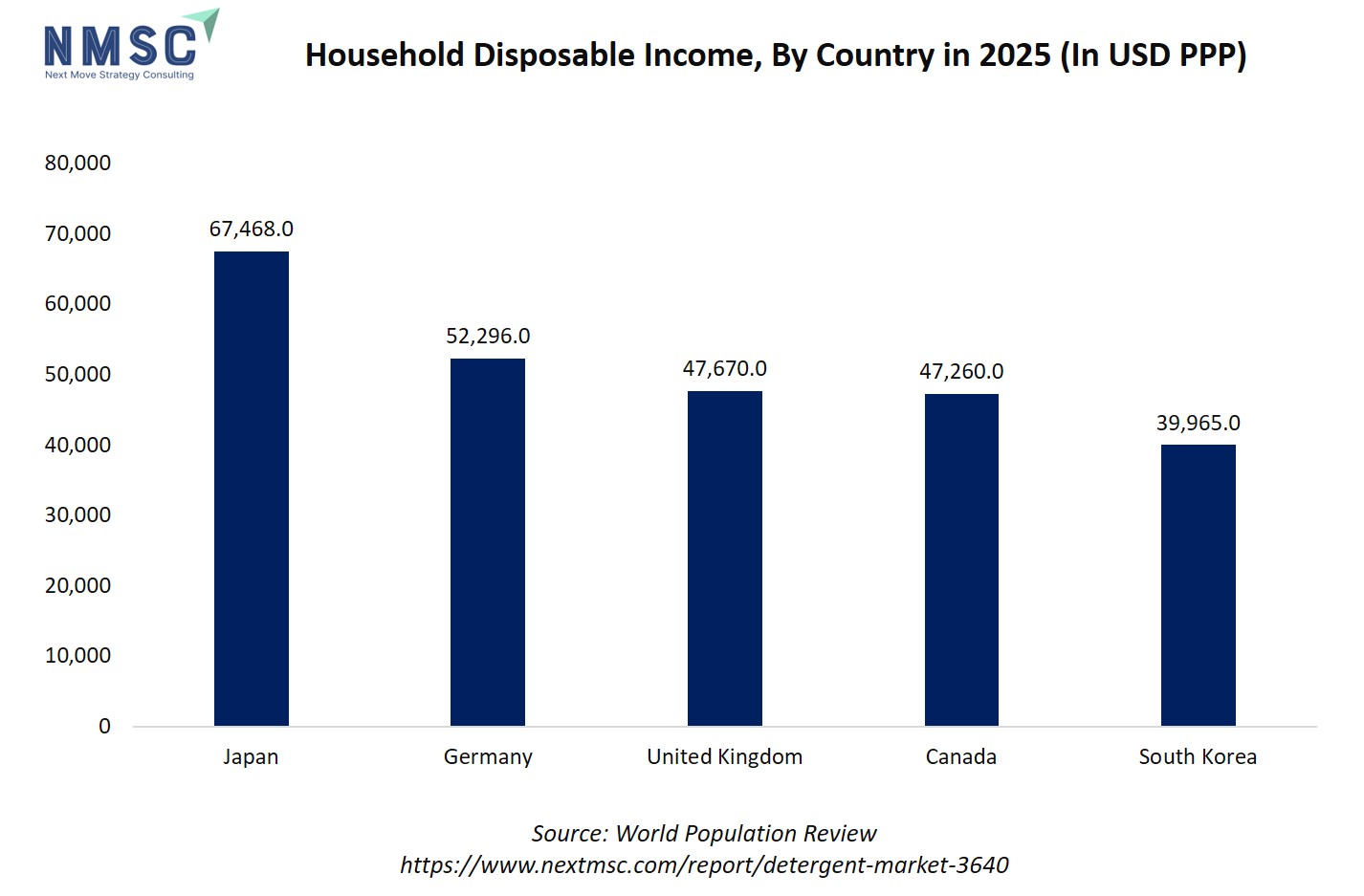
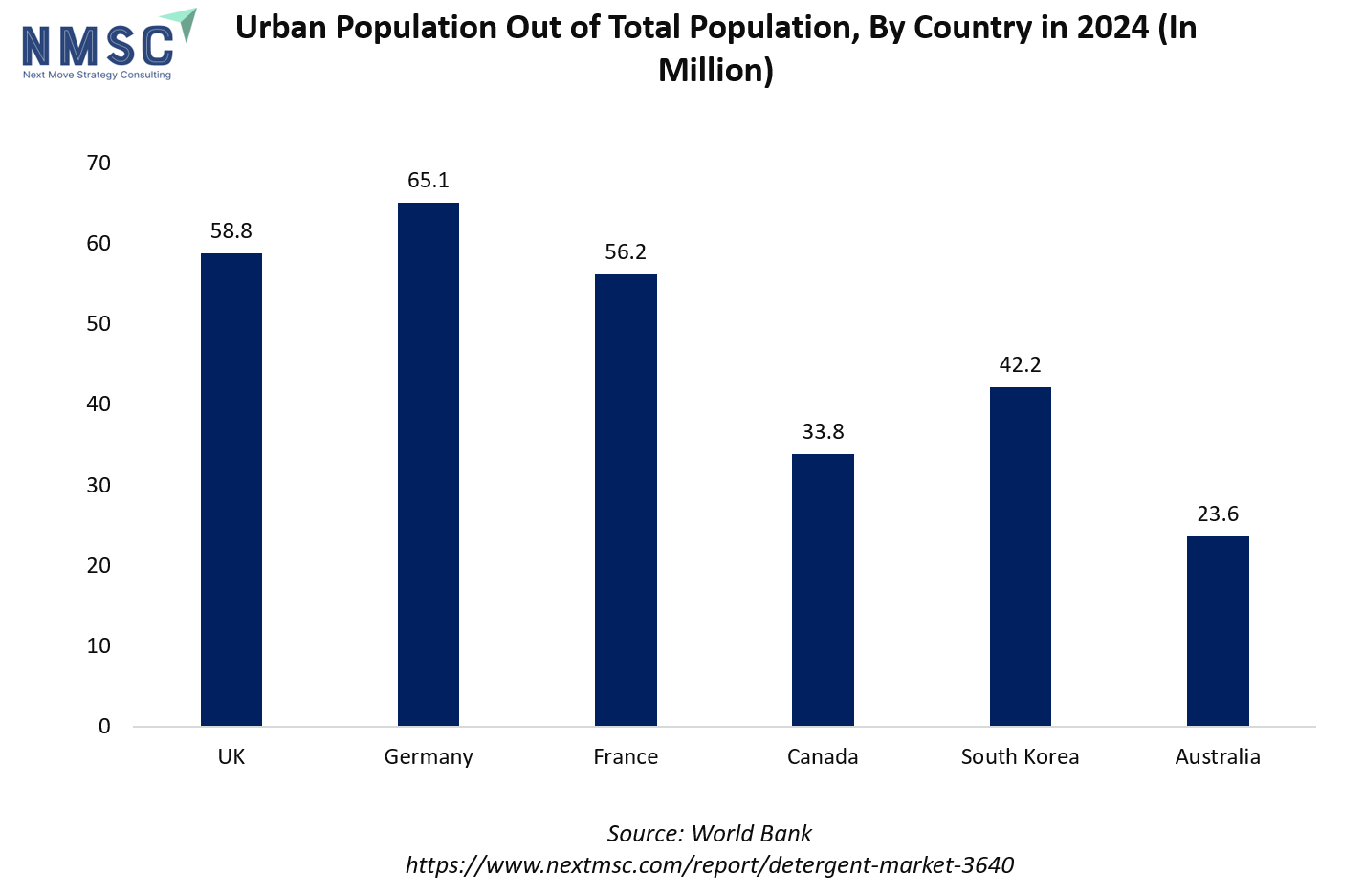
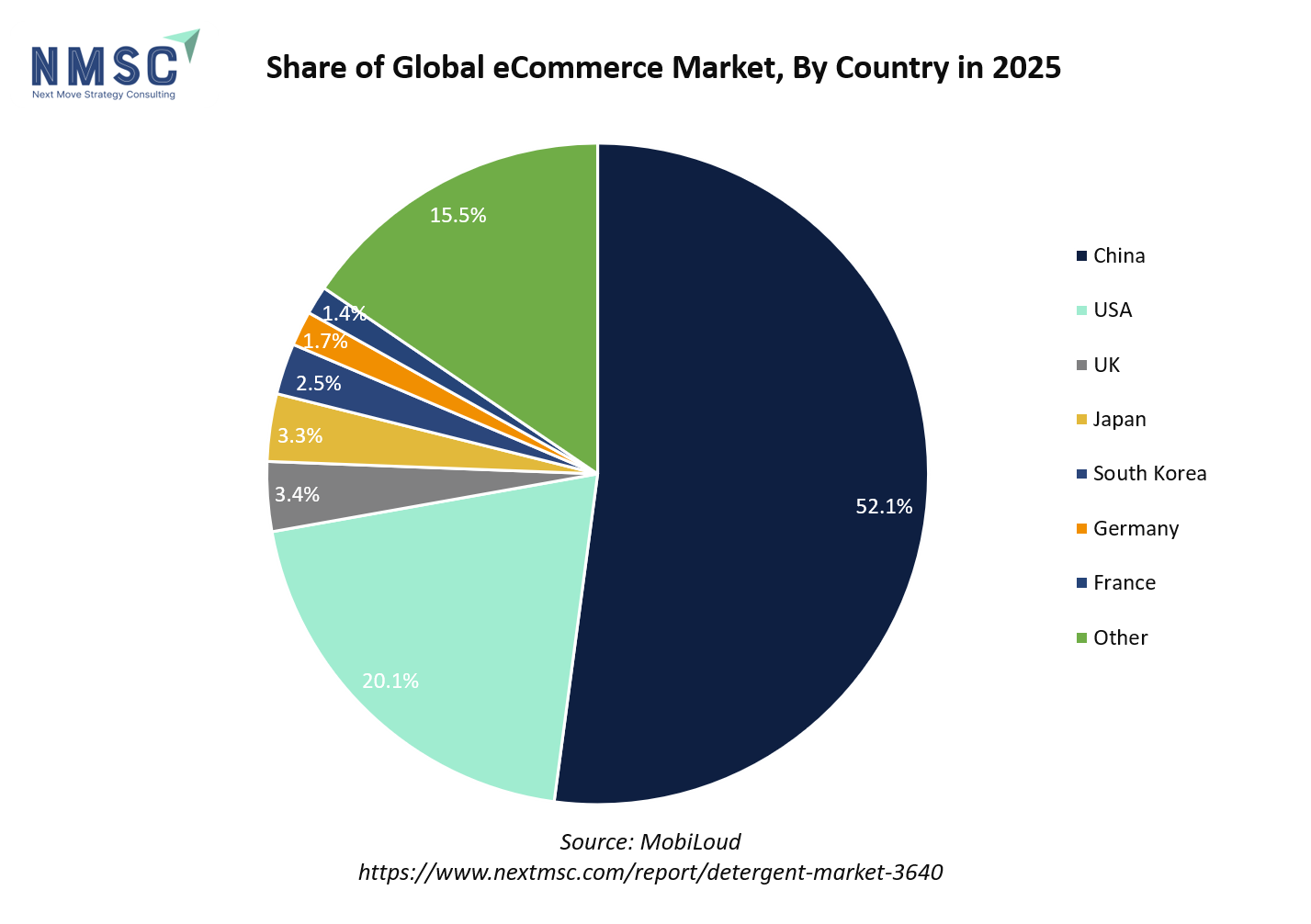
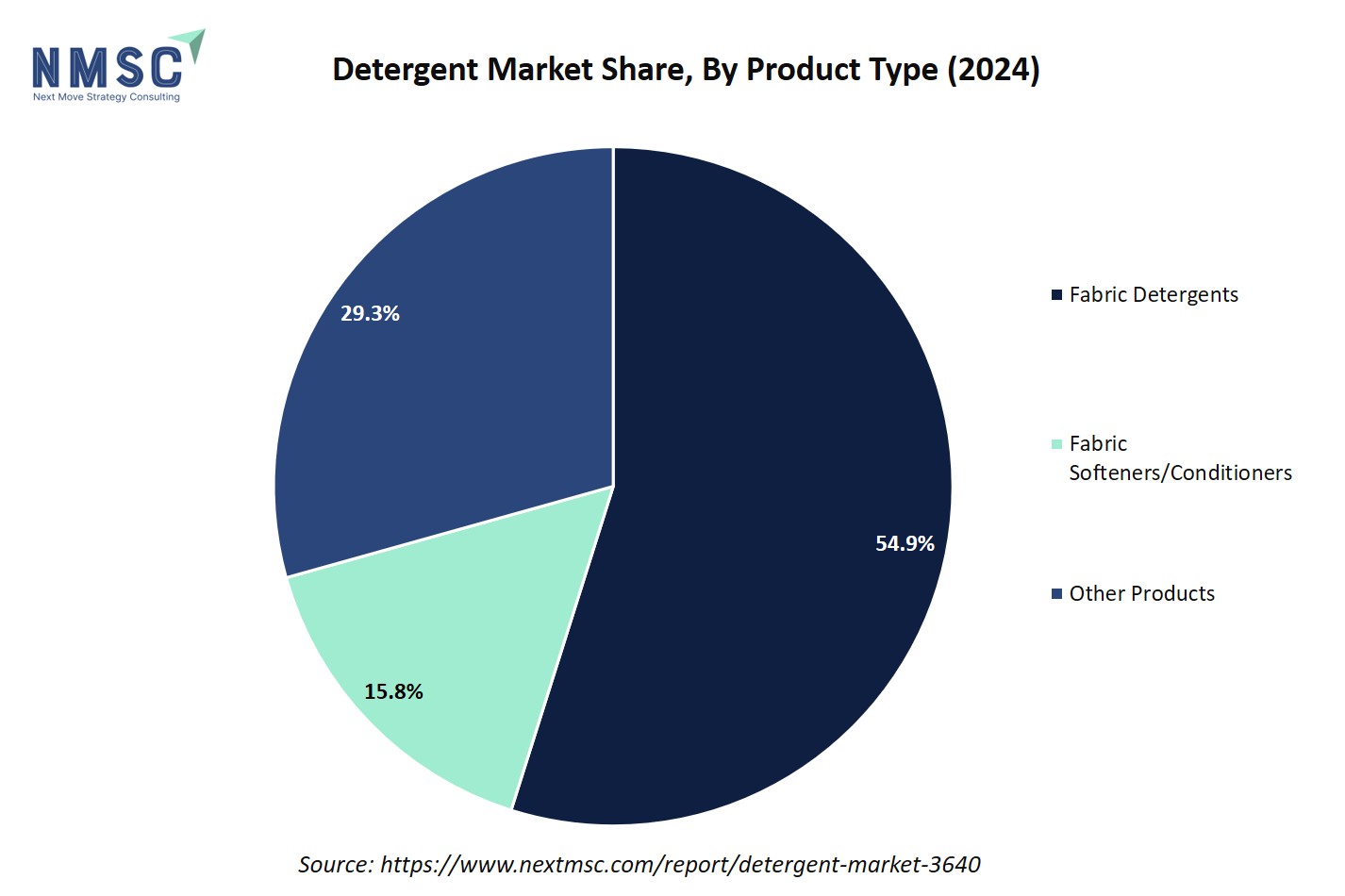

















 Speak to Our Analyst
Speak to Our Analyst



